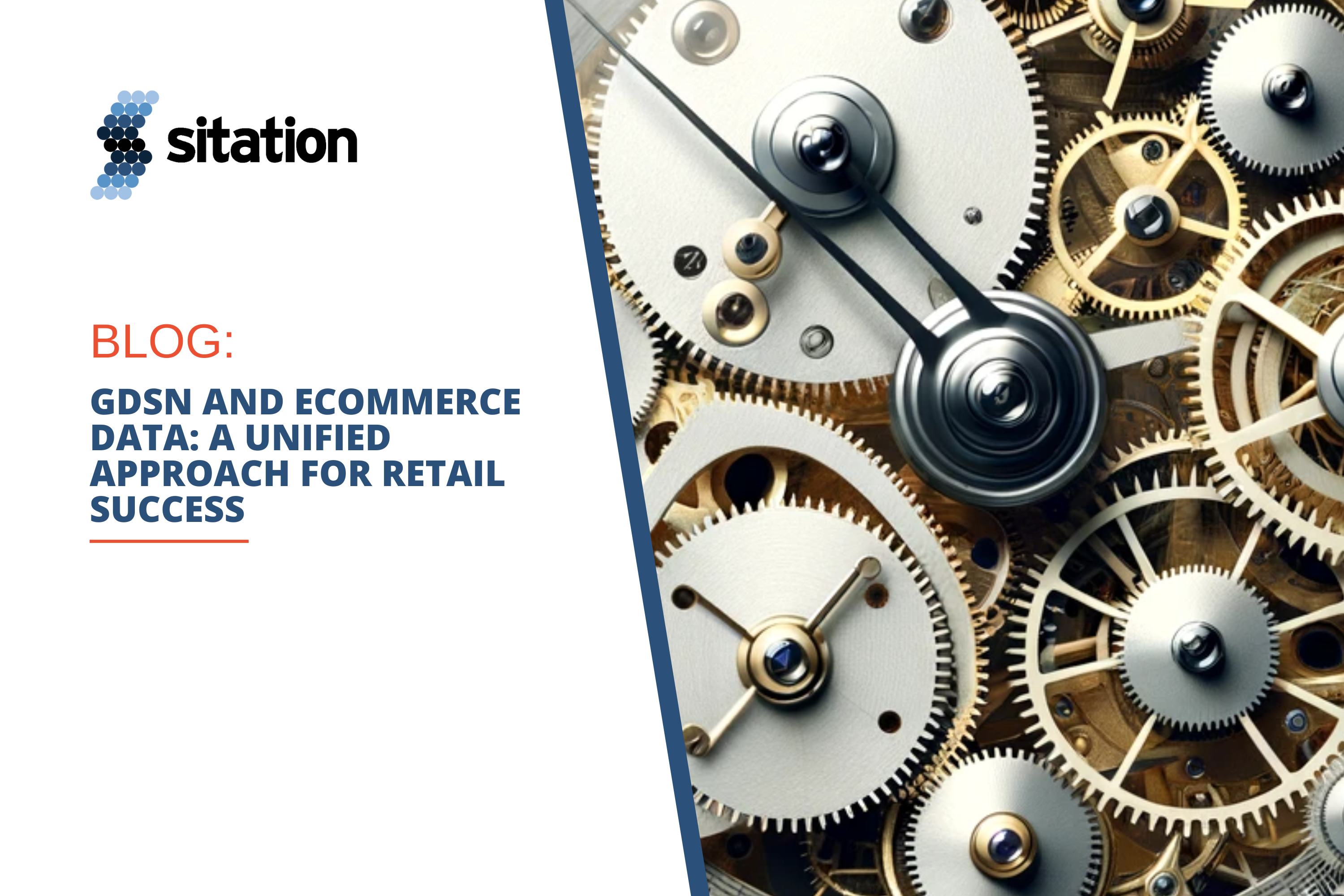In the world of retail, the key to success often lies in the details of product data management. Retailers are increasingly recognizing the need for comprehensive supply chain, specification, and eCommerce data to sell products effectively. It is critical that all three components work together. Product data delivery, no matter the method, should align under one strategy and set of aligned goals. Leveraging the Global Data Synchronization Network (GDSN) alongside eCommerce syndication can minimize data gaps and streamline the retail process to ensure your product content is shared in the supply chain as well as the digital shelf.
The Role of GDSN
As the retail industry continues to evolve, so do consumer expectations. Today’s shoppers demand consistent and reliable information about the products they choose, whether online or in-store. Achieving this level of consistency is a complex task that requires effective management of product data by brand owners, manufacturers, and retailers alike.
The Global Data Synchronization Network (GDSN) is central to this challenge, a key player in ensuring the smooth exchange of accurate and current supply chain data among trading partners. The GDSN encompasses a wide range of vital information, from detailed packaging hierarchies and nutritional facts to product weights, dimensions, and high-quality imagery. Such comprehensive data is the cornerstone for any retailer seeking to uphold the accuracy and dependability of their supply chain.
The GDSN’s role extends significantly into the realms of eCommerce and digital shelf management. Its integration into these domains is not just beneficial but crucial for ensuring data consistency across multiple sales channels. By harmonizing GDSN data with eCommerce platforms, retailers and manufacturers are equipped to offer consumers a seamless and cohesive shopping experience, whether they are browsing online or walking through physical store aisles. This integration is instrumental in consistently updating product information, ranging from detailed specifications to current pricing. Consequently, it ensures that consumers have access to reliable and accurate product data, regardless of their shopping platform.
Challenges
However, managing GDSN and eCommerce data in isolation can lead to several challenges. Often, organizations manage the two realms separately with entirely different teams that do not regularly collaborate. Mismatched data not only results in operational inefficiencies but can also lead to chargebacks, fines, and a disrupted consumer shopping experience. For instance, if the weight of a product is inaccurately listed on an eCommerce platform, it can lead to logistical issues and customer dissatisfaction, impacting the brand’s reputation.
Solution
The solution lies in managing both GDSN and eCommerce data channels collaboratively. A synchronized approach ensures that the data across retail and digital platforms is consistent and accurate. This unified strategy is vital for a smooth omnichannel experience, where consumers expect seamless interaction with products, irrespective of the shopping channel they choose.
It’s essential that both the processes and teams managing these data channels are in sync. The goal is to ensure that the data, whether it’s related to product specifications or digital merchandising, is uniform across channels. This means breaking down siloes within organizations and fostering a culture of collaboration and data-sharing. By doing so, retailers can deliver a complete and accurate data package for each product, enhancing the consumer’s shopping experience.
The overlap between GDSN and digital shelf data is significant. While both channels share common data elements like images and product dimensions, the digital shelf often requires additional information tailored for the eCommerce environment. This includes engaging marketing descriptions, feature bullets, and digital merchandising attributions, all of which are crucial for capturing the online consumer’s attention. The challenge for brand owners and retailers is to ensure that this additional information complements the core product data from GDSN, creating a cohesive and consistent narrative about the product.
In addition to basic product information, the digital shelf offers opportunities to enhance the consumer experience with enriched content. This could include 360-degree images, video demonstrations, or interactive product guides. Such enriched content engages the consumer and provides a more comprehensive understanding of the product, leading to informed purchase decisions.
Conclusion
In conclusion, the integration of GDSN and eCommerce data is not just a technical necessity but a strategic imperative for brand owners and retailers. By aligning these data channels under a unified strategy, retailers can reduce friction in selling items, avoid operational pitfalls, and ensure a consistent shopping experience. The result is a streamlined omnichannel experience that meets the evolving needs of the modern consumer. As the retail industry continues to grow and adapt, the retailers who master this unified approach to data management will be the ones who thrive in the competitive marketplace.
Contact us to work with GDSN-certified experts at Sitation to leverage GDSN and eCommerce data for retail success.




